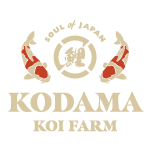Nagashima Koi Farm
Mr. Nagashima has made himself different and original from other breeders by focusing on quality Shiro Utsuri, Showa and Ginrin Showa.
Learn More About Nagashima Koi Farm
aka (nickname): Otozo
Owner(s): Nagashima
Specialty: Showa
Nagashima Koi Farm known as "Otozo" is one of the leading breeders in Mushigame area. Mushigame is a famous area for Kohaku and Taisho Sanke. Matsunosuke is also one of the breeders in this area. Being at this location, Mr. Nagashima has made himself different and original from other breeders by focusing on quality Shiro Utsuri, Showa and Ginrin Showa. His has 2 pairs of Shiro Utsuri parents. One of the female parents was honored prize in 1990. Enjoy his quality selections of Koi.
Interview with Nagashima Koi Farm
Interview on January/February 2003
Nagashima Koi Farm
by Mamoru Kodama
The owner of Nagashima Koi Farm, known as “Otozo,” is now 49 years old and has 28 years of koi breeding experience.
He chooses Shiro Utsuri, Showa, and Gin Rin Showa and concentrates on breeding quality ones. His koi, especially Shiro Utsuri, is popular among Japanese koi hobbyists. He is also actively involved in Mushigame-Rinyukai (breeders club at Mushigame area).
Wonder of Showa in Yamakoshi
Kodama:
Please introduce us to your farm first.
Otozo:
I have about 8.7 acres in total. I use them for Tosai (1 year old), Nisai (2 years old), and Sansai (3 years old)—3.7 acres is for Tosai, 2.5 acres for Nisai, and 2.5 acres for koi over Sansai. I produce 15,000 Tosai, 1000 Nisai, and 150 Sansai at the time of harvest in autumn.
Kodama:
So you breed these three varieties with the 8.7 acres. How about the proportion?
Otozo:
I have 5,000 Shiro Utsuri and 10,000 Showa and Gin Rin Showa.
Kodama:
Mushigame is the famous area for Kohaku and Taisho Sanke breeding. But you breed only Showa and Shiro Utsuri in this area. It is very interesting. I wonder what made you do so.
Otozo:
Because of the clay quality of Yamakoshi area (Mushigame is one part of this), Kohaku and Taisho Sanke are the main breeds. Few breeders produce Showa and Shiro Utsuri. Niigata has many breeders, and competition is severe among the breeders. If you breed what everybody breeds, you are in that competition. So I wanted to breed what they did not breed. This is why I have been breeding them for 25 years.
Kodama:
It sounds like a good idea to breed what nobody breeds, but because clay quality is important, isn’t it a disadvantage that you breed Showa in Yamakoshi, which is a suitable area for Kohaku and Taisho Sanke breeding?
Otozo:
Yes, it is. For some reason, Showa cannot have good hi when you breed them in Yamakoshi. Taisho Sanke can have beautiful hi while Showa do not. It sounds strange because they are both three colored koi, but it is truly so. I finally thought clay quality causes this and found another property in the Horinouchi area that is known to be suitable for Showa breeding. I have about 2.5 acres there to breed Showa and Gin Rin Showa.In case of Shiro Utsuri, because Shiro Utsuri do not need hi, I can still breed them in the Yamakoshi area. So I breed Shiro Utsuri near my house.
Kodama:
Does not the clay quality affect Shiro Utsuri?
Otozo:
Not really. Sumi comes up pretty good even on Showa. It is just hi that does not appear well on Showa. Also, sumi appears in concrete ponds. It is okay to breed Shiro Utsuri here.
Kodama:
What kind of clay is suitable for Showa breeding?
Otozo:
Dark clay is good for Showa Hi. Hasshiki area of Koide village has good clay.
Kodama:
I s that where the Takahashi Koi Farm is?
Otozo:
Yes. The area is also known for Hasshiki watermelon. That is a good place. Mr. Takahashi’s place is very rich in water, too. There is a big river and clay has been washed for decades. So it is not only dark clay, but also has a lot of gravel.
Kodama:
They meet the conditions of good Showa breeding, don’t they. I have heard from Mr. Kosaku Seki, that the place that has hard clay and does not become muddy is suitable for Shiro Utsuri breeding.
Otozo:
It is true that that kind of clay quality is good for koi to live. But as long as they have enough sumi for me to cull with, sumi does come up in the concrete pond. So I do not feel it is inconvenient.
Shiro Utsuri of Otozo
Kodama:
Please let me know about your Shiro Utsuri. How many pairs of parents do you have?
Otozo:
I have two pairs. One female is 13-years-old and the other female is 23-years-old. They are both very high quality koi.
Kodama:
Please tell us more details.
Otozo:
The 23-year-old female is the one that won Kokugyo (Best in Size) at the 22nd All Japan Nishikigoi Show in 1990. I got it from the owner, Mr. Tomoaki Naito and have used it as my parental koi.
Kodama:
That sounds great. Do you think it is necessary to use that kind of famous koi?
Otozo:
At a koi show, the koi’s beauty is judged and evaluated fairly. So I believe we should use these highly-judged, beautiful koi at koi shows for parental koi. This Shiro Utsuri won the prize by beating Kohaku, Taisho Sanke, and Showa. It has the ideal quality.
Kodama:
Do you mean show quality koi by quality koi?
Otozo:
Yes. Some say that pattern is not as important as quality in parental koi. But I think the offspring get similar patterns to its parents. “Quality plus Pattern” are important to breed beautiful and excellent koi. If you breed koi with excellent pattern, I believe you would get koi with similar, excellent pattern. The question is if you have the skill to cull.
Kodama:
It is known that breeders consider quality as the top priority in choosing parents.
Otozo:
on the other hand, considers “excellent pattern” as important as quality. This is an excellent idea.
Achievement of Otozo
Kodama:
Please show us your proud koi.
Otozo:
I sell most of my koi when they are tosai. I often receive thank you calls from all over Japan for my koi winning good prizes at koi shows. But because I do not keep records of each one of them, I have few. Recently, one Shiro Utsuri won Rin’oh (Best in Size of ZNA) prize in class of 35 at ZNA All Japan Nishikigoi Show. It is from us.
Kodama:
Rin’oh prize is a great prize. It is equal to Kokugyo prize (Best in Size) at All Japan Combined Nishikigoi show by All Japan Nishikigoi Promotion Association (Breeders Association). Because you use koi that won Best in Size before, you can often get the Kokugyo-class Shiro Utsuri.
Otozo:
It is difficult to get a higher quality one than its parents, but I think it is not that difficult to get similar quality ones.
Kodama:
I understand why Shiro Utsuri from Otozo is popular among Japanese hobbyists. You said that you sell most of them when they are tosai. When do you usually start selling them?
Otozo:
I do not sell them at all in autumn. I keep them in concrete ponds and wait for the sumi to gradually come up. Then, I sell them starting in March.
In autumn when I pull them from mud ponds, their skins are not beautiful. But after keeping them in concrete ponds until spring, their skin becomes pure white. This is why I start selling them in March.
Kodama:
That means that you sell about 5,000 starting in the spring.
Otozo:
I keep about 300 of tategoi (future potential koi) and sell the rest.Otozo Shiro Utsuri
Kodama:
Please explain to us the character of your Shiro Utsuri.
Otozo:
One of the reasons why my Shiro Utsuri is strong at koi shows lies in its pure shiroji (white ground). Sumi quality is important in Shiro Utsuri. And it is shiroji that enhances the sumi. When they are tosai, it is preferable that shiroji has a little bit of bluish ground. My Shiro Utsuri show their sumi once when they are tosai. I will keep those that have excellent patterns and leave them in mud ponds. In mud ponds, many koi lose their sumi again. Then I keep those white koi one more year. Their sumi gradually comes back. From my experience, koi that once lose its pattern and bring it back later tends to be a good quality koi.
Kodama:
What do you think is the difficult part in Shiro Utsuri breeding?
Otozo:
Well, because Shiro Utsuri has Showa blood from its ancestors, it has a little bit of hi on its body to some extent. Some koi lose it while some koi keep it. It is hard to decide if I should keep it or not in culling.
Kodama:
That is when you cull fries, am I correct?
Otozo: Yes.
Kodama:
How may fries do you have?
Otozo:
With the 2 pairs, I keep about 150,000 fries at first. Then, by autumn, I decrease them to 5,000.
Kodama:
I just saw your Shiro Utsuri, but your Shiro Utsuri really has nice “shiroji quality.” Because shiroji quality is so high, sumi shines lacquer. Your koi are very impressive.
Nishikigoi Philosophy
Kodama:
What is your “motto” or “Nishikigoi philosophy” in breeding koi?
Otozo:
I think raising koi is the same as raising a child. It is best to raise them naturally. I do not give them drastic changes. For example, my green house has several concrete ponds. Believing that every pond has the same water temperature and water quality, I would move them from one to the next. Only this change could cause health problems. So I pay the most attention to keep the surroundings consistent and keep them healthy. I think it is important until they have grown and matured. This kind of gentle protection is necessary.Some breeders raise koi more than 25 cm (10?) during winter time by heating the pond. I think this is forcing koi. So my motto is to provide koi with just adequate amount of food or surroundings that they need as we humans do with our children.
Kodama:
I agree with you. Last of all, please introduce your koi to the readers.
Otozo:
Please look at shiroji (white ground) first on my koi. Then, please look at sumi quality. Even if, they are still hiding underneath the shiroji and not showing them all, if you can predict its pattern, please buy them with confidence. They will come out gradually.
Kodama:
So if the shiroji is good and sumi pattern is recognizable underneath shiroji, we can buy your koi with confidence.
Thank you very much.
We have koi available to buy from Nagashima Koi Farm online if shown below the search field. If not, contact us with what you're looking for and we'll help find the right koi.
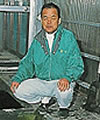
We couldn't find any products in our online store for your search in our Nagashima Koi Farm catalog,
BUT we may have inventory at the farm or in Japan, so please use the "Request a Koi" form to help us find your perfect koi fish.
Koi Auctions Ending Soon!
Place your bids now to win your choice of beautiful Japanese koi for sale at a great price! We always have a variety of fixed price koi and consistently run koi auctions ending daily; with most special auctions ending on Wednesday and Sunday each week.
-
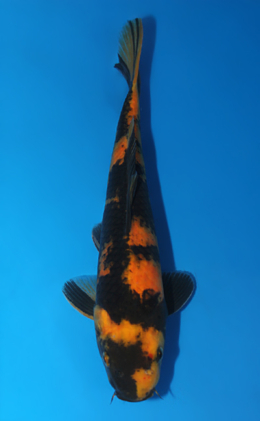
Ki Utsuri – koi #x0317a015
Current bid: $10.00Time left:Login / Register to BidHighest Bidder:cheri668Estimated Value: $300.00Breeder(s): Otsuka Koi FarmSex: MaleBorn in: 2023Size: 12.20 inch / 31 cm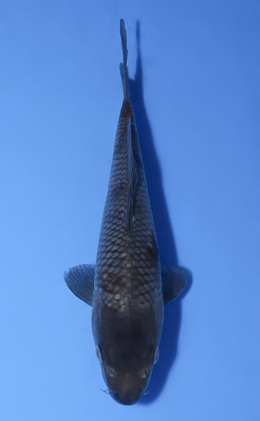
Ochiba Shigure – koi #x0514a005
Starting bid: $10.00Time left:Login / Register to BidEstimated Value: $300.00Breeder(s): Kanno Koi FarmSex: UnknownBorn in: 2024Size: 7.09 inch / 18 cm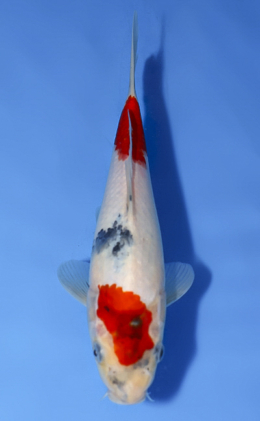
Showa – koi #x0514a009
Starting bid: $10.00Time left:Login / Register to BidEstimated Value: $300.00Breeder(s): Isa Koi FarmSex: UnknownBorn in: 2024Size: 7.87 inch / 20 cmVariety: Showa,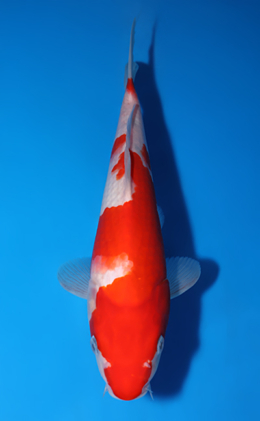
Kohaku – koi #x0519a051
Starting bid: $10.00Time left:Login / Register to BidEstimated Value: $300.00Breeder(s): Dainichi Koi FarmSex: MaleBorn in: 2024Size: 10.24 inch / 26 cmVariety: Kohaku,
